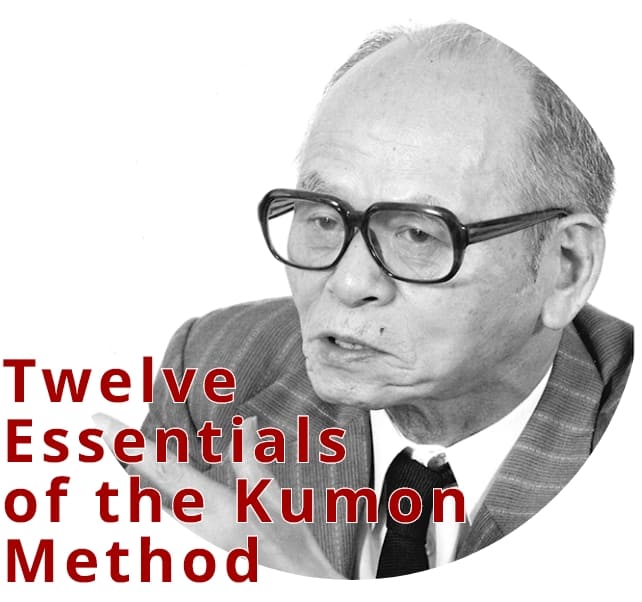Part 9 Why We Place Importance on Achieving 100 Per Cent

The pleasant feeling of satisfaction and pride that comes from independently and successfully completing a test, no matter how small, builds self-confidence and motivation. Study begins from a level where students can get 100 per cent. By building up confidence and academic ability through repeatedly achieving perfect scores, students become motivated and can maintain that motivation.
Toru Kumon
The joy that children feel in being able to do something for themselves and get a perfect score instills
the desire in them to achieve a perfect score the next time too: "Yay! I did it, 100 per cent! OK, next
time I'll get 100 per cent again."
Next time we have children do worksheets that they will be able to get a perfect score on again. As
planned, they get another perfect score and say to themselves: "Great, I'll get 100 per cent next time
too!" In this way Kumon students build up perfect score upon perfect score.
Every one of the Kumon worksheets is in a way a test paper in itself. Study is comprised of students
reading the instructions themselves, thinking about how to do the questions, and then writing down their
conclusions. Because students begin study from a level well below that of their school grade they are able
to continue achieving perfect scores with ease. Before long, students catch up to their grade level and
advance to content that they have not yet learned at school. Once students have advanced beyond their
school grade level they may not always achieve a perfect score at the first attempt. In these cases, the
Kumon Instructor provides the necessary instruction to ensure that students can correct their mistakes to
achieve a perfect score in the end. To do so, the Instructor may provide students with a hint for how to
do the questions they made mistakes on, or teach students concisely as appropriate. With the Kumon Method,
however, students progress from the basics while building a firm foundation for the next step as they go.
In this way they advance to high level material in small steps, so they will never suddenly encounter
questions that are completely beyond their comprehension. In most cases students will be able to see their
mistake and correct it with the help of just a small hint or word of advice from their Instructor.
Although, having said that, children do not just suddenly gain the ability to correct, or form the habit
of correcting, their own mistakes. Kumon Instructors continuously remind their students, "Don't just erase
the answers that have been marked wrong straight away. First, carefully review them and find the part
where you made the mistake before erasing." This is because we want to give students practice in finding
their own mistakes by themselves and correcting them by themselves.
With Kumon Method instruction, one point that we place importance on is to grade worksheets as quickly as
possible after students have finished doing them. By going through the process of studying, finding their
mistakes and then correcting them by themselves, children build their knowledge and skills. Keeping the
time frame in which this process takes place as short as possible increases the effectiveness of
study.
Therefore at Kumon we always keep Toru Kumon's words in mind as we watch over the children—"grade the
worksheets as fast as possible, and wholeheartedly with great care."
